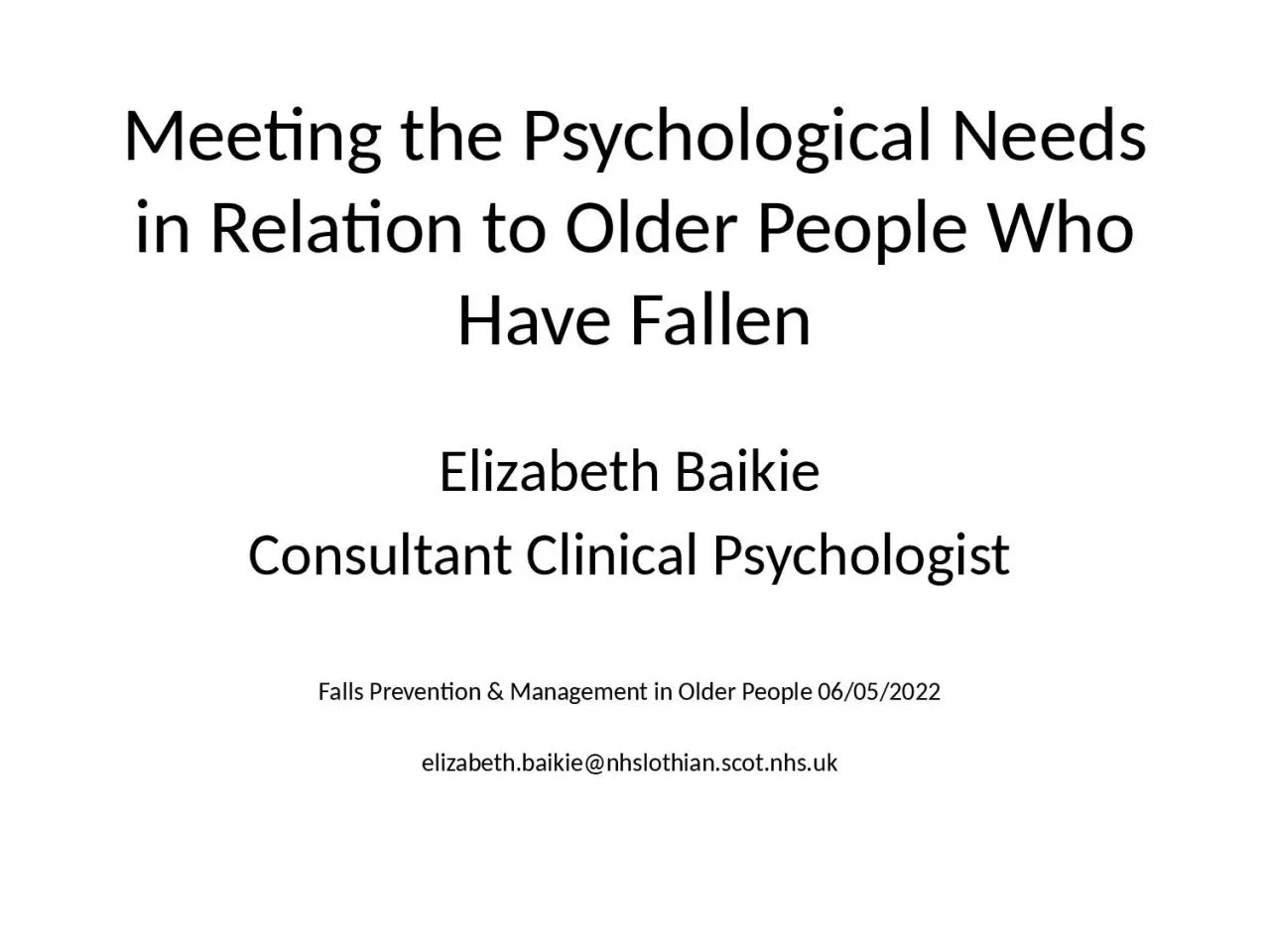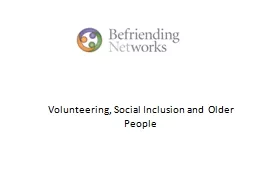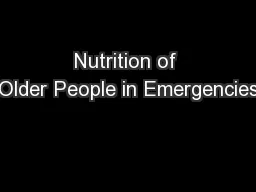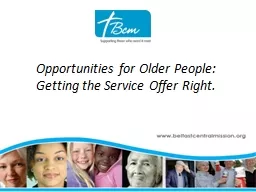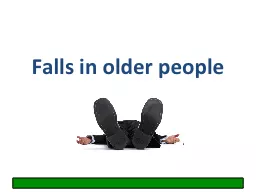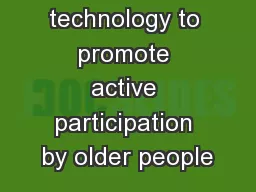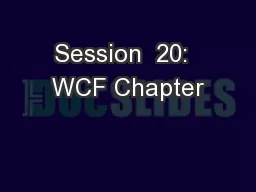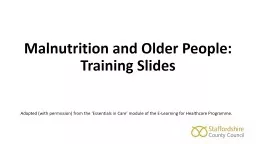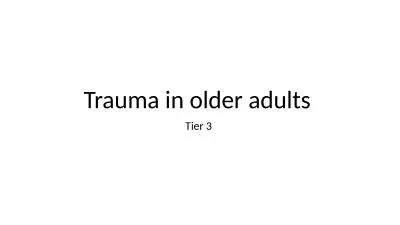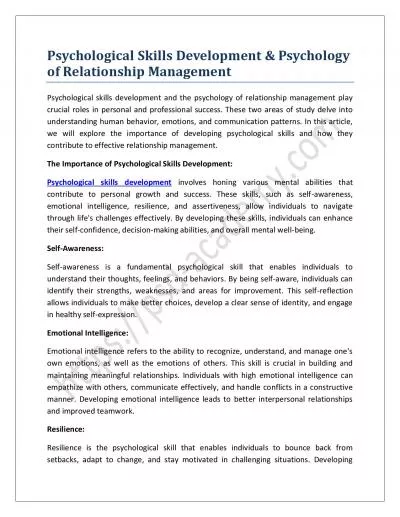PPT-Meeting the Psychological Needs in Relation to Older People Who Have Fallen
Author : fauna | Published Date : 2024-02-09
Elizabeth Baikie Consultant Clinical Psychologist Falls Prevention amp Management in Older People 06052022 elizabethbaikienhslothianscotnhsuk Overview Psychological
Presentation Embed Code
Download Presentation
Download Presentation The PPT/PDF document "Meeting the Psychological Needs in Relat..." is the property of its rightful owner. Permission is granted to download and print the materials on this website for personal, non-commercial use only, and to display it on your personal computer provided you do not modify the materials and that you retain all copyright notices contained in the materials. By downloading content from our website, you accept the terms of this agreement.
Meeting the Psychological Needs in Relation to Older People Who Have Fallen: Transcript
Download Rules Of Document
"Meeting the Psychological Needs in Relation to Older People Who Have Fallen"The content belongs to its owner. You may download and print it for personal use, without modification, and keep all copyright notices. By downloading, you agree to these terms.
Related Documents

